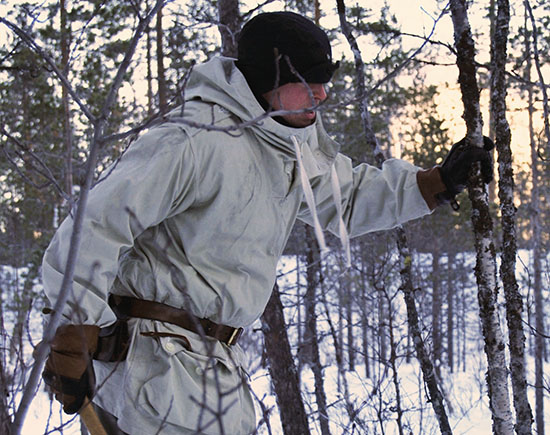Hello,
I'm trying to find out the way's clothing layering works.
I was in the services when they wore an even olive drab uniform, only 100% cotton and wool was issued, and they tought me (just very lightly, not thourough at all) how to use that.
These day's army's have issued much more sophisticated cloth items, both synthetic and natural fiber, and I am very curious how those systems work.
I know the basic principle of layering (like peeling an union) but not the way which materials to combine or not? (When we were in Canada freezing our but off, most of us were experiencing huge electric shocks due to dry air and building static electricity due to the friction of two layers of different material.)
And maybe it could be separated in a Old school (natural fibers) and a Modern (mostly synthetic) section?
And one more; If you are/were in the services, are those clothing Items issued all in the same size? (thinking that they are taking into account that the second layer has to be a bit bigger then the first layer in order to keep you comfortable and not squeezing underneath your arms or so, the Michelin-man feeling.)
I'm trying to find out the way's clothing layering works.
I was in the services when they wore an even olive drab uniform, only 100% cotton and wool was issued, and they tought me (just very lightly, not thourough at all) how to use that.
These day's army's have issued much more sophisticated cloth items, both synthetic and natural fiber, and I am very curious how those systems work.
I know the basic principle of layering (like peeling an union) but not the way which materials to combine or not? (When we were in Canada freezing our but off, most of us were experiencing huge electric shocks due to dry air and building static electricity due to the friction of two layers of different material.)
And maybe it could be separated in a Old school (natural fibers) and a Modern (mostly synthetic) section?
And one more; If you are/were in the services, are those clothing Items issued all in the same size? (thinking that they are taking into account that the second layer has to be a bit bigger then the first layer in order to keep you comfortable and not squeezing underneath your arms or so, the Michelin-man feeling.)







 Wool on wool gets round it, but it is a bit limiting as an approach in terms of what you can wear for lightness.
Wool on wool gets round it, but it is a bit limiting as an approach in terms of what you can wear for lightness.